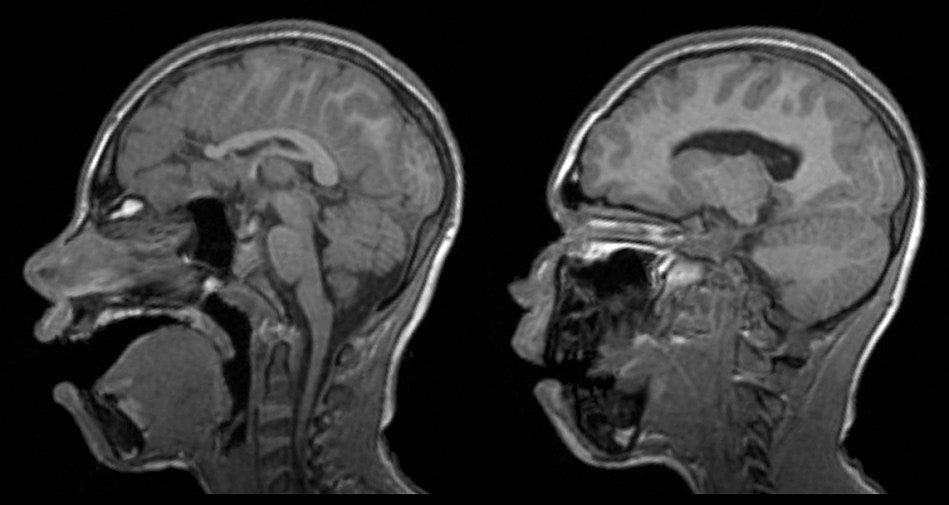
|
An 8 month-old boy underwent an evaluation for microcephaly and seizures. |

![]()
![]()
| Lissencephaly / Polymicrogyria / Pachygyria:
T1-weighted sagittal MRIs. This patient displays several
abnormalities on the spectrum of neuronal migration disorders. Note
the partial agenesis of the corpus callosum. The rostrum is
completely missing. If one looks closely at the parasagittal frontal area,
one can see many small gyri (polymicrogyria). Neuronal migration disorders are a group of congenital disorders caused by impaired migration of neurons in the developing brain. Neuronal migration normally occurs during the second month of gestation. If the signals that guide neurons are impaired, a variety of structural defects may occur, including: • Lissencephaly In lissencephaly, there is a complete absence of gyri and sucli, with the surface of the brain appearing perfectly smooth. These children typically have severe mental retardation with microcephaly and seizures. Pachygyria is a milder variant of lissencephaly, characterized by a thickened cortex and large, broad gyri. |
Revised
11/04/06
Copyrighted 2006. David C Preston